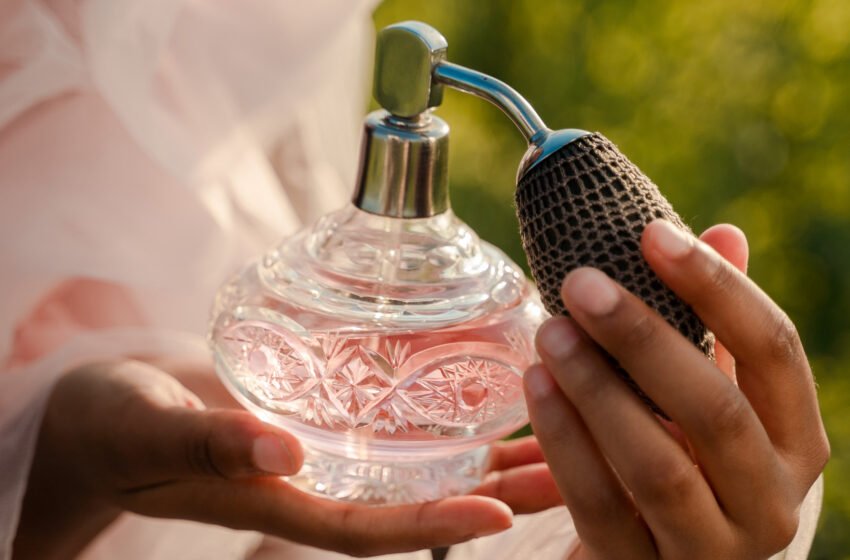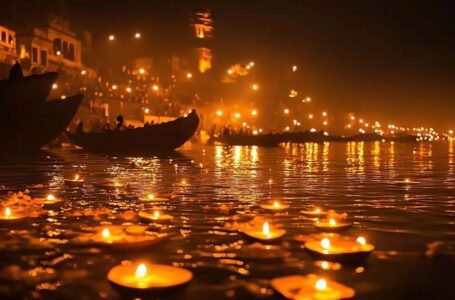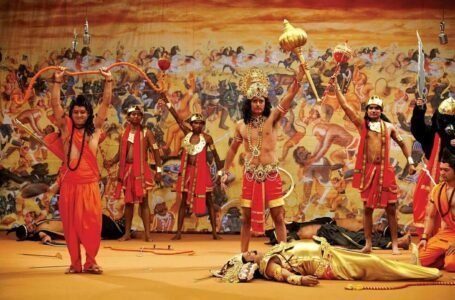Beyond Borders: Exploring Regional Varieties in Perfumery

Perfumery, a delicate fusion of artistry and science, serves as a window into the rich tapestry of cultural heritage spanning across France, Italy, and the Middle East. In this exploration of olfactory delights, we embark on a journey through centuries of tradition, innovation, and sensory allure. From the storied houses of Chanel and Guerlain in France to the bustling streets of Venice resonating with the essence of Mediterranean fragrances, and onward to the aromatic landscapes of the Middle East steeped in ancient rituals, each region’s perfumery unfolds as a captivating narrative. Join us as we delve into the intricate craftsmanship, historical influences, and modern interpretations that define the timeless allure of perfumery in France, Italy, and the Middle East.

France boasts a legacy of perfumery that spans centuries, with its roots tracing back to the 17th century. This tradition is deeply ingrained in the nation’s culture, representing a commitment to quality and sophistication. French perfumers are renowned for their expertise in crafting fragrances, a skill honed through years of study and dedication. They meticulously select the finest ingredients, including natural essential oils and aromatics, to create complex and sophisticated scents.

The reputation of French perfumes is further enhanced by the prestigious brands that call France home. Chanel, Dior, and Guerlain are just a few examples of the luxury houses that have cemented France’s position as a leader in the fragrance industry. Chanel, established by Gabrielle “Coco” Chanel in 1910, stands as a globally renowned fashion and fragrance house, exerting significant influence in both realms. Among its notable fragrances are Chanel No. 5, Chanel No. 19, and Coco Mademoiselle. Guerlain, founded in 1828, holds a venerable position as one of France’s oldest and most esteemed perfume establishments. Renowned for their intricacy and artistry, Guerlain’s fragrances encompass classics such as Shalimar, Jicky, and Mitsouko.
Paris Elysees, originating in 1990 in Saint Tropez, embodies a commitment to crafting original, high-caliber fragrances at accessible prices. Produced in Grasse, France’s perfume epicenter since the 18th century, their line spans men’s and women’s perfumes, garnering a global presence across all continents.

Dior, initiated by Christian Dior in 1947, epitomizes luxury and sophistication in both fashion and fragrance domains. Prominent scents from Dior include J’adore, Miss Dior, and Poison, reflecting the brand’s enduring elegance and allure. Hermès, established in 1837, commands recognition as a premier luxury brand celebrated for its leather goods, accessories, and fragrances. Among their acclaimed perfumes are Eau des Merveilles, Terre d’Hermès, and Kelly Calèche, embodying the brand’s commitment to excellence and refinement.
Marketing and advertising play a crucial role in positioning French perfumes as symbols of luxury and exclusivity. Through sophisticated packaging and captivating campaigns, these perfumes appeal to consumers’ desire for elegance and refinement.
Grasse, known as the “perfume capital of the world,” has been at the forefront of French perfumery since the 16th century. Its ideal climate and fertile lands make it the perfect location for cultivating flowers and other plants used in perfume-making.
The process of creating a French perfume is labor-intensive and requires meticulous attention to detail. Perfumers use a combination of traditional and modern techniques to extract essences from botanicals and blend them into harmonious compositions: Distillation is the most common method used to extract essential oils from plant materials, such as flowers, leaves, and wood, by heating them and collecting the condensed vapor. Expression involves pressing or squeezing the aromatic parts of fruits, such as citrus peels, to release their essential oils. Enfleurage is a traditional technique where flowers are placed on a layer of fat, which absorbs their fragrance over time. The fat is then dissolved in alcohol to extract the perfume. Maceration is similar to enfleurage, but involves soaking plant materials in a solvent to extract their aromatic compounds.

French perfumes are characterized by their complex fragrance profiles, which often feature a combination of floral, citrus, herbal, spicy, woody, and musky notes. These scents are carefully balanced to create a unique olfactory experience.
As the sun sets over the lavender fields of Grasse, illuminating the landscape in a golden hue, it symbolizes more than just the beauty of French perfumery. It marks the culmination of centuries of tradition and craftsmanship, where each fragrance tells a story deeply rooted in France’s cultural tapestry. Similarly, Italian perfumery, with its rich history and Mediterranean influences, mirrors this narrative, resonating through the bustling streets of Venice and the lush landscapes of the Italian countryside. Together, these two perfumery traditions stand as testaments to the enduring power of scent, weaving a captivating tale that transcends time and borders.
Italian perfumery is a tale woven intricately with the threads of history, culture, and the vibrant essence of the Mediterranean. Step back in time to the glory days of Venice, where the city stood as a beacon of trade, culture, and innovation. Various trade routes converged in Venice, each bringing its own set of ingredients. Venice served as the hub for spices, ingredients, and various other goods, acting as the epicenter of trade and commerce. Venetians, with their innate spirit of trade, didn’t just passively receive these treasures; they absorbed them, making perfumery an integral part of their cultural tapestry.

Venice played a pivotal role in absorbing perfumery culture from the Orient, particularly from the Byzantine Empire and Constantinople. Perfumery wasn’t just a luxury; it permeated every aspect of life, from science and commerce to aristocracy and religious worship.
Italy’s landscape, rich with bountiful harvests and top-quality raw materials, has profoundly influenced its approach to fragrance. Bergamot is heralded as the “King of citrus” with its invigorating zest. The bubbling fruitiness of tangerine and the ethereal allure of Florentine iris are both quintessential elements in Italian perfumery.

But it’s not just about the ingredients; it’s about the cultural resonance they evoke. Italians have a deep connection with ingredients like iris, leather, basil, and rosemary, ingrained in their heritage and upbringing. And with the emergence of gourmand fragrances, there’s a nostalgic embrace of scents like almond, reminiscent of familial warmth and tradition.
Religion, particularly the influence of the church, cast a long shadow over Italian perfumery. Perfume and cosmetics were often deemed as the “work of the devil,” stifling expressions of femininity and sensuality. Until the 1960s, Italian women were confined to fragrances that exuded innocence rather than allure, contrasting with the more daring creations of French perfumers.

In France, perfume is as integral to culture as food and wine, with young girls embarking on their fragrance journey as early as 12. Musky, dark, and spicy scents reign supreme, reflecting the grandeur of France’s fashion heritage. In Italy, the influence of the Mediterranean land infuses fragrances with freshness, citrus, and neroli, a nod to the abundance of orange blossom fields.
Italian perfumery is a mosaic of history, culture, and tradition, each fragrance a testament to the richness of its heritage. From the spice-laden streets of Venice to the sun-kissed citrus groves of Calabria, every scent tells a story of resilience, innovation, and the enduring allure of the Mediterranean. As borders blur and cultures intertwine, the tapestry of Italian perfumery continues to evolve, embracing diversity and celebrating the beauty of scent in all its forms.
Perfumery in the Middle East traces its origins to ancient civilizations such as the Egyptians, Mesopotamians, and Persians, where fragrance held profound significance in spiritual, medicinal, and cosmetic practices. Aromatic substances like myrrh, frankincense, and rose were revered and integrated into daily rituals, laying the foundation for a tradition that has endured through the ages.

The Middle East boasts a rich tapestry of aromatic ingredients sourced from both natural and synthetic origins. Traditional Middle Eastern perfumes, known as attars, are crafted from botanical extracts such as oud (agarwood), rose, jasmine, and saffron. These precious essences, meticulously distilled and blended, yield fragrances that embody the essence of the region’s landscapes and customs. Alongside natural ingredients, modern Middle Eastern perfumers harness synthetic molecules to enhance and prolong the longevity of their creations.
Oudh, derived from the resinous heartwood of the Agar tree, is a prized ingredient in perfumery. While healthy trees yield odorless wood, older trees afflicted by fungi produce an oleoresin, resulting in a dark, rich resin within the heartwood. This resin is distilled to obtain the pure oil of oudh.
Rose, beyond its aesthetic appeal, is a vital component of Mukhalat. Rose Damascena, a hybrid rose native to Persia, was introduced to Syria and later brought to Europe by a crusader from Damascus. Blooming for only thirty days each year, Damascus Roses are meticulously hand-picked to preserve their essential oils. It takes approximately five tons of blossoms to yield one kilogram of oil.

Saffron, derived from the dried stigmas of the saffron flower, is a highly coveted spice used in both cooking and perfumery. Renowned as the most expensive spice by weight, saffron is cultivated in countries such as Iran, Spain, India, Greece, Azerbaijan, Morocco, and Italy. It is extensively utilized in Indian and Middle Eastern perfumery and is gradually making its mark in Western perfumery.
Sandalwood, sourced from the Santalum tree, holds a significant place in perfumery and religious rituals. Mysore sandalwood, revered for its quality, originates from the Karnataka region in Southern India. Despite its existence for over four millennia, sandalwood essence emerged in modern perfumery only in the last century. With its healing properties, sandalwood has been integral to Hindu, Buddhist, and Chinese medicinal practices.

Craftsmanship and tradition are at the heart of Middle Eastern perfumery. Perfumers in the region uphold age-old techniques passed down through generations, meticulously blending natural ingredients with precision and care. Many artisans take pride in sourcing raw materials locally, supporting artisanal producers and preserving traditional cultivation and extraction methods.
Arabian perfumery is distinguished by its use of musk, jasmine, amber, and oud, creating scents that are deeply rooted in the region’s cultural heritage. Arabian fragrances evoke a sense of historical heritage and superior luxury, becoming an intrinsic part of one’s identity and character. Oud, in particular, holds a special place in Arabian society, with its deep, woody aroma lingering as a cherished memory for days.

The Middle Eastern perfume industry continues to evolve, incorporating new ingredients like honey, chocolate, and vanilla to cater to evolving tastes. While traditional ingredients like saffron, sandalwood, and rose remain integral, there’s a growing trend towards experimentation and fusion with Western perfumery. This blend of tradition and innovation has propelled Middle Eastern fragrances to global prominence, captivating audiences with their intensity, sensuality, and exotic allure.
Perfumery holds deep cultural significance in the Middle East, intertwined with religious practices and daily rituals. From the preparation of bakhoor to the use of Mukhalat, perfumes play a central role in purifying homes and enhancing personal adornment. With roots dating back to the 6th century, perfumery continues to be a cherished tradition, reflecting the rich tapestry of Middle Eastern culture and heritage.

Middle Eastern perfumery is a celebration of tradition, craftsmanship, and sensory delight. From the resinous depths of oud to the delicate allure of rose, each fragrance tells a story of ancient rituals and modern sensibilities. As the industry evolves and embraces new influences, the essence of Middle Eastern perfumery remains timeless, a testament to the enduring power of scent in capturing the essence of a region’s soul.
Perfumery, an art form cherished across continents, reveals itself as a mosaic of history, culture, and tradition. From the spice-laden streets of Venice to the aromatic landscapes of the Middle East, each region’s fragrances tell stories of resilience, innovation, and the enduring allure of scent. French perfumery stands as a testament to elegance and sophistication, while Italian fragrances mirror the vibrancy of the Mediterranean. Meanwhile, the Middle Eastern tradition embraces ancient rituals and modern sensibilities, weaving a tapestry of sensory delight. As borders blur and cultures intertwine, the essence of perfumery remains timeless, capturing the soul of each region in a bottle of liquid memory.


